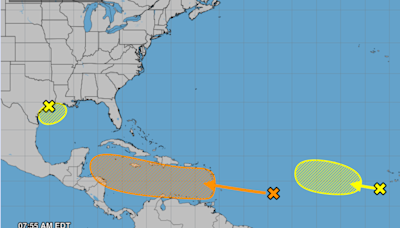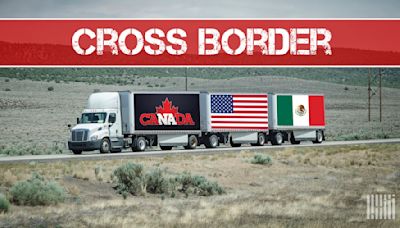Search results
Geopolitically, however, Mexico is entirely considered part of North America, along with Canada and the United States. [102] Mexico's total area is 1,972,550 km 2 (761,606 sq mi), making it the world's 13th largest country by total area.
On October 4, 1824, Mexico ratified its first-ever constitution as an independent country, a document known as the “ Federal Constitution of the United Mexican States.” Ever since that day,...
- Overview
- Land
Mexico, country of southern North America and the third largest country in Latin America, after Brazil and Argentina. Mexican society is characterized by extremes of wealth and poverty, with a limited middle class wedged between an elite cadre of landowners and investors on the one hand and masses of rural and urban poor on the other. But in spite of the challenges it faces as a developing country, Mexico is one of the chief economic and political forces in Latin America. It has a dynamic industrial base, vast mineral resources, a wide-ranging service sector, and the world’s largest population of Spanish speakers—about two and a half times that of Spain or Colombia. As its official name suggests, the Estados Unidos Mexicanos (United Mexican States) incorporates 31 socially and physically diverse states and the Federal District.
More than half of the Mexican people live in the centre of the country, whereas vast areas of the arid north and the tropical south are sparsely settled. Migrants from impoverished rural areas have poured into Mexico’s cities, and nearly four-fifths of Mexicans now live in urban areas. Mexico City, the capital, is one of the most populous cities and metropolitan areas in the world. Mexico has experienced a series of economic booms leading to periods of impressive social gains, followed by busts, with significant declines in living standards for the middle and lower classes. The country remains economically fragile despite the forging of stronger ties with the United States and Canada through the North American Free Trade Agreement (NAFTA).
Mexico’s urban growing pains are in sharp counterpoint to the traditional lifestyles that prevail in more-isolated rural areas. In states such as Oaxaca or Chiapas, small communal villages remain where indigenous peasants live much as their ancestors did. The cultural remnants of great pre-Columbian civilizations, such as Teotihuacán or the Mayan pyramids at Chichén Itzá and Tulum, provide a contrast to colonial towns such as Taxco or Querétaro. In turn, these towns appear as historical relics when compared with the modern metropolis of Mexico City. Yet even the bustling capital city, which has been continually built and rebuilt on the rubble of past civilizations, reveals Mexico’s wide range of social, economic, and cultural struggles. As the renowned Mexican poet and intellectual Octavio Paz observed,
Past epochs never vanish completely, and blood still drips from all their wounds, even the most ancient. Sometimes the most remote or hostile beliefs and feelings are found together in one city or one soul, or are superimposed like [pre-Columbian] pyramids that almost always conceal others.
It is this tremendous cultural and economic diversity, distributed over an enormously complex and varied physical environment, that gives Mexico its unique character.
Britannica Quiz
Sharing a common border throughout its northern extent with the United States, Mexico is bounded to the west and south by the Pacific Ocean, to the east by the Gulf of Mexico and the Caribbean Sea, and to the southeast by Guatemala and Belize. Mexico also administers such islands and archipelagoes as the Tres Marías in the Pacific and Cozumel and Mujeres off the coast of the Yucatán Peninsula. Including these insular territories, the roughly triangular country covers an area about three times the size of Texas. While it is more than 1,850 miles (3,000 km) across from northwest to southeast, its width varies from less than 135 miles (217 km) at the Isthmus of Tehuantepec to more than 1,200 miles (1,900 km) in the north.
Special offer for students! Check out our special academic rate and excel this spring semester!
Despite the acceptance by many Americans in the 1840s of the concept of Manifest Destiny, the future boundary between the United States and Mexico was anything but a foregone conclusion. So how and when was the U.S.-Mexico border established?
Mexico and the United States have a complex history, with war in the 1840s and the subsequent American acquisition of more than 50% of former Mexican territory, including Texas, California, and New Mexico. Pressure from Washington forced the French invaders out in the 1860s.
Sep 13, 2023 · By virtue of shared geography, history, and deep cultural and people-to-people ties, Mexico remains one of the United States’ closest and most valued partners. The countries share a 2,000-mile border with 47 active land ports of entry.




